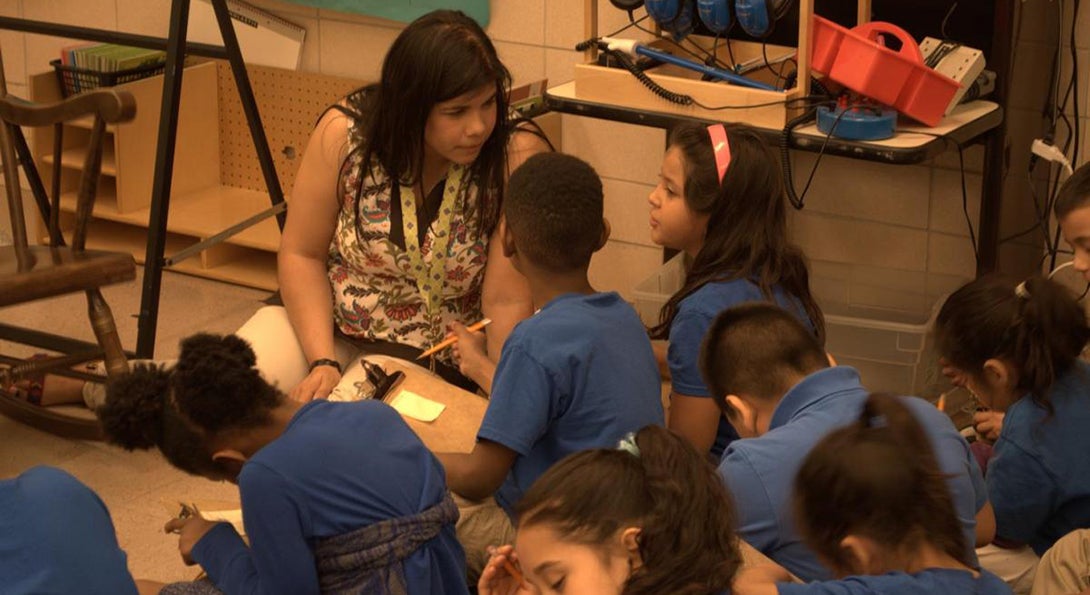Bilingual Education Needs Wider Acceptance

Introduction
There are no former teachers in the U.S. Supreme Court, but that fact has not stop the justices from ruling on the effectiveness of bilingual education.
In deciding whether English language learner students in the Nogales Unified School District in Arizona were granted equitable opportunity under the law to learn English, the Court’s conservative wing, in the 2009 case Horne v. Flores, not only ruled in favor of the school district but wrote that “research on ELL instruction indicates there is documented, academic support for the view that SEI (structured English immersion) is significantly more effective than bilingual education."
A new book from the College's Aria Razfar, PhD, associate professor of curriculum and instruction, is making the case that the justices' ruling was misguided. His recent book “Applying Linguistics in the Classroom: A Sociocultural Perspective,” argues that failing to value and leverage heritage languages and linguistic repertoires is producing a negative impact on multilingual students’ academic outcomes. With co-author Joseph Rumenapp, PhD Curriculum and Instruction student at the College, Razfar calls for a new way of viewing the multilingual speaker.
“We need to see the multilingual speaker as a unified whole, as someone striving for coherence across different experiences,” Razfar said. “We are not dividing by adding language but showing the depth of connections we actually have.”
Razfar and Rumenapp’s book presents tools for educators to think about and implement linguistic teaching strategies in the classroom in a process Razfar calls “languaging,” developing a metalinguistic awareness and an ability to reflect on teaching in a detailed way. The goal is for teachers to develop capacity to engage in conversations with students that prompt students to think about their own language practices and how language impacts their lives. In school environments in which native language is not always validated, these conversations become more crucial.
The book focuses the strategies through the lens of six frames of identity: nature, institutional, discursive, affinity, learner and solidarity. Teaching language through feedback and positive correction with empathy is the key standard for developing solidarity.
For example, teachers may focus on corrective feedback in reading and writing based on an acceptable linguistic form. Razfar wants to push teachers to make sure they have an explanation for students why certain linguistic forms are correct. A native Mandarin speaker learning English may discover the sounds signified by the letters R and L in the respective languages are the same sound; native Mandarin speakers would not hear a difference. A teacher would be well-served to point out that an error made by students in this case is systematic, not random. Corrective feedback that a student interprets as not valuing their identity can lead to student shutdown.
Narrative can be a useful tool for understanding culture and cultural expectations. Our relationships, our errors, our foibles and our successes are all stories that are told, and the syntax of those narratives can be employed to infer the implicit values of a cultural system.
Another lesson for teachers focuses on the International Phonetic Alphabet, as teachers learn the sounds of all languages through one unified alphabet. A further step studies the phoning of multiple languages through contrastive analysis, and a final step looks at the sociocultural and semantic subtleties of language.
Razfar and Rumenapp advocate for these strategies because they argue the current environment for multilingual students is far from ideal. Students who do not fit into the monolingual standard are generally marginalized. Requiring students to assimilate into the dominant language and give up linguistic repertoire takes away tools that could help students improve as overall learners. Razfar envisions what he calls a “truly just society” that is not just multilingual for multilingual kids, but multilingual for all to reduce differentiated status between languages and cultures.
“In outcomes and in the achievement gap, we are far away from the ideal,” Razfar said. “We know gaps exist but we don’t know how to reduce that gap in the moment-to-moment interaction of our lives. Linguistics can be part of that toolkit, giving us a different consciousness to help us see those gaps disappear.”